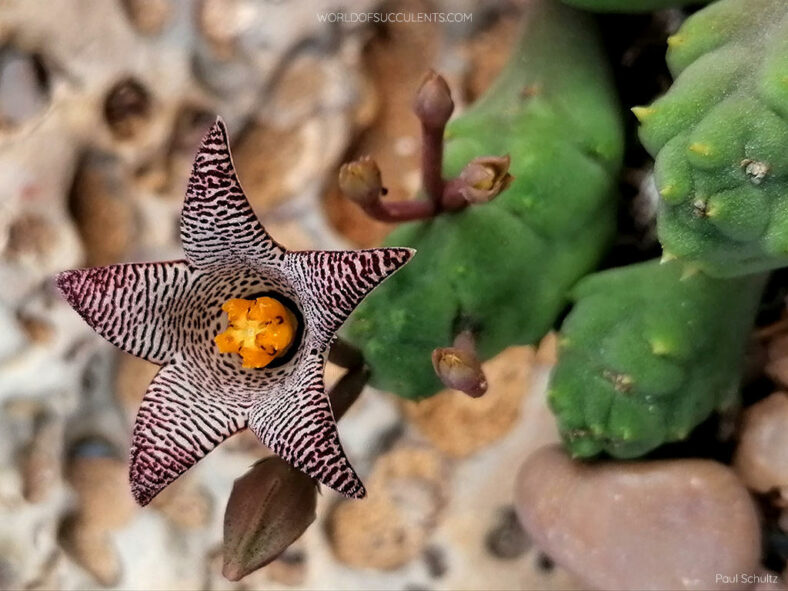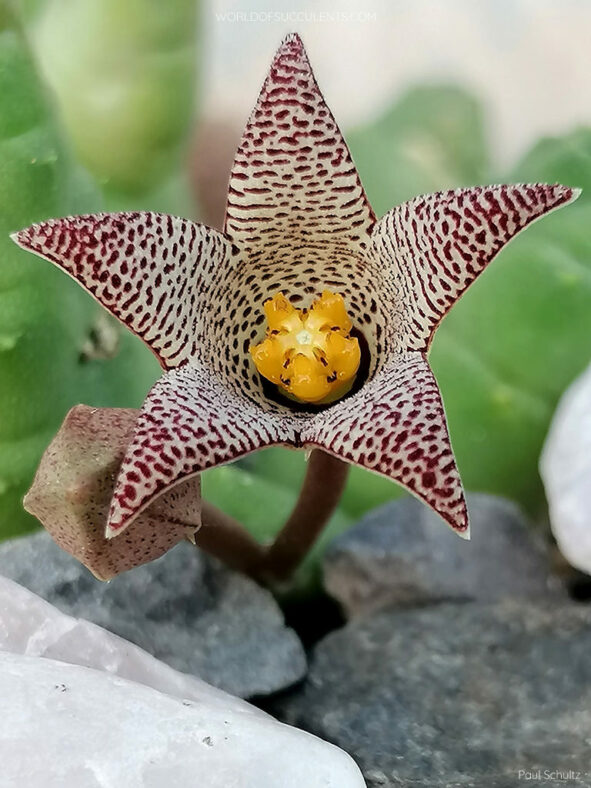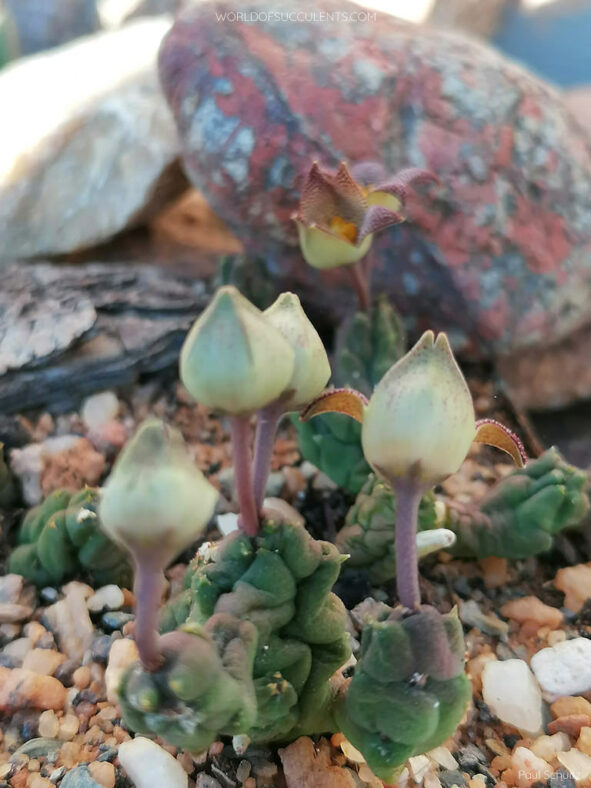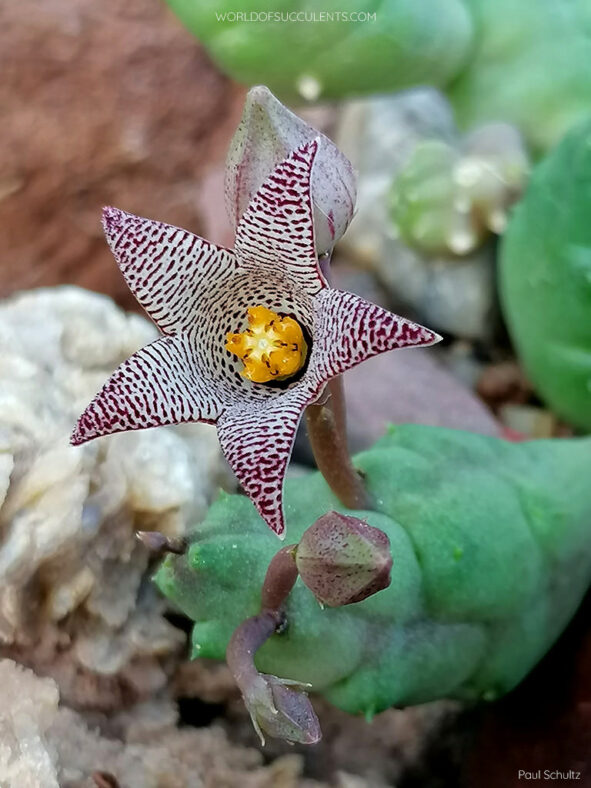Scientific Name
Piaranthus punctatus (Masson) Schult.
Synonym(s)
Caralluma punctata, Ceropegia punctata, Cynanchum punctatum, Obesia punctata, Piaranthus punctatus var. punctatus, Stapelia punctata
Scientific Classification
Family: Apocynaceae
Subfamily: Asclepiadoideae
Tribe: Ceropegieae
Subtribe: Stapeliinae
Genus: Piaranthus
Etymology
The specific epithet "punctatus (pronounced punk-TAH-tus)" means "pointed; punctate" and probably refers to the slightly rough surface of the stems.
Origin
Piaranthus punctatus is native to South Africa. It occurs along the border between the Western Cape and the Northern Cape provinces.
Description
Piaranthus punctatus is a small succulent that forms a clump of short, dull green, obtusely 4-angled stems with a slightly rough surface and 4 to 5 small tubercle-like teeth along each angle. The stems are decumbent to ascending or erect, ovoid to somewhat club-shaped or cylindrical. They can grow up to 5.4 inches (6 cm) long, often longer in cultivation, and 0.8 inches (2 cm) thick. Each tubercle is tipped with a short-lived rudimentary leaf.
The flowers appear in late summer and fall. The hairy corolla is star-shaped with five recurved lobes and can reach up to 1.1 inches (2.8 cm) in diameter. It is cream-colored with scattered, irregularly shaped transversal maroon lines and spots across the upper surface. The outside of the corolla is shiny greenish-cream with a few vertical rows of dark red dots. The yellow columnar corona forms the flower center. The fruits are follicles with pretty large seeds. They can grow up to 4 inches (10 cm) long.

How to Grow and Care for Piaranthus punctatus
Light: P. punctatus grows best in full sun or partial shade but will benefit from light shade during the hottest summer days. Indoors, place the plant near the brightest window in your home. Avoid abruptly moving plants adapted to lower light levels to full sun to prevent sunburn.
Soil: You can use a commercial potting soil mix for succulents or prepare your own with 50 to 70 % mineral grit, such as coarse sand, pumice, or perlite.
Temperature: This plant thrives in warm outdoor environments with low to moderate humidity. It does not like winter cold and should remain fairly dry and warm during its winter dormancy. P. punctatus can withstand temperatures as low as 35 °F (1.7 °C). USDA Plant Hardiness Zones 10b to 11b, 35 to 50 °F (1.7 to 10 °C).
Watering: P. punctatus has typical watering needs for a succulent. Water your plant thoroughly during the growing season, from spring to fall, and allow the soil to dry between waterings. Do not water in winter. The plant goes dormant in winter and needs almost no water, about once a month.
Fertilizing: Fertilizing is a good idea to keep your plant healthy and thriving. Feed with water-soluble fertilizer diluted to half the recommended strength only when the plant is actively growing.
Repotting: Repot your plant in spring, just before the growing season begins. P. punctatus has shallow roots and does not require much soil to grow. Choose a container with drainage holes.
Propagation: The best way to propagate this succulent is by stem cuttings. Take cuttings during the growing season to ensure good rooting. P. punctatus is also easy to grow from seeds. Sow the seeds in spring.
Learn more at How to Grow and Care for Stapeliads.
Toxicity of Piaranthus punctatus
P. punctatus has no toxic effects reported. It is safe around pets and humans.
Links
- Back to genus Piaranthus
- Succupedia: Browse succulents by Scientific Name, Common Name, Genus, Family, USDA Hardiness Zone, Origin, or cacti by Genus
Photo Gallery


